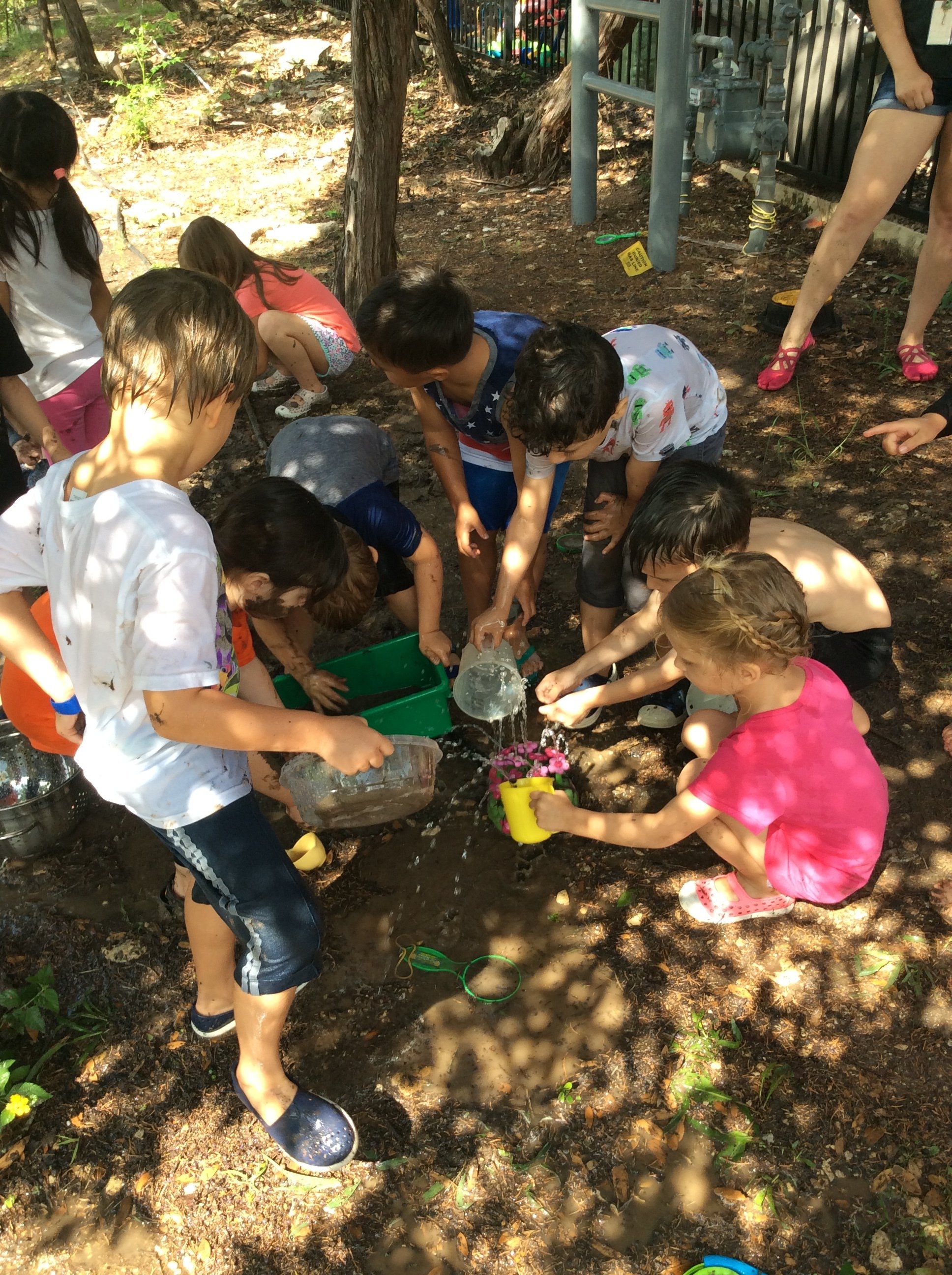Muddy & Marvelous
Okay, so let’s talk about mud. A concept I’m seeing more frequently on social media and hearing about at conferences is the mud kitchen. And I’m here to tell you, I love it.
Now, I know, that many American schools are often limited by their surroundings. When I taught in Brooklyn, muddy playgrounds weren’t readily available. I also know that, at least for me, when some new & seemingly large undertaking is suggested, 100 things pop into my brain about why I can’t do it. I need permission from the admin, how much money it will cost, the clean up involved, doing it within state and school safety guidelines, etc.
But lately, for myself, I’ve been trying to do a simple re-framing. How would I have felt having this experience as a child? And when I came back to mud kitchens, I knew how much I would have loved it. So I started looking at that list of obstacles and how to tackle them.
I didn’t have the funds or resources to create an actual mud kitchen and it couldn’t be something permanent on the playground. But there is a big patch of dirt behind the playground with a little tree cover. And there is a spigot attached to the school wall and a water hose— so I knew we could make something work.
I did the usual emailing parents and sending letters home and telling my director. But honestly, I didn’t ask them. I said, “We’re doing this. Bring extra clothes.” I was surprised how easily everyone went along. I even got the class next door to join in.
We had an INCREDIBLE day. All of us got filthy and squishy and wet. We discovered that rocks are shiny when wet and we could see bugs and worms and paint the bark of a tree with mud. The air was filled with giggles and screams. It was probably one of my favorite days ever as a teacher.
1) In American schools, we (educators) are often so restricted by so many outside factors and we say, “I wish I could do that in my classroom, but…” And there are certain things that we can’t do because of restrictions. But in what ways are we pushing back? Are we saying, “This is something worth doing because it is invaluable experience for my students. I’m going to work it out.” And it doesn’t have to be a mud kitchen or a mud day. It can be the wish to include LGBTQ+ books in your classroom (despite current book ban patterns) or be barefoot in the class, or cook when your school doesn’t have a stove or a microwave. I think we owe it to our students and to ourselves by first saying, “What CAN I do? How can I do more? How can I make this experience richer?”
There are always ways to modify these experiences for your classroom. Make mud sensory tubs or put it on a lunch tray and play at the table if you can’t go outside. I mean, mud is free. I didn’t have labels, or a child sized whisk, or a tiny kitchen, etc. I grabbed plastic spoons and shovels from the toy box and brought Tupperware and a ladle from home. The mud itself is free.
2) Why a mud day? In a time when Global Warming & Climate Change are seriously and drastically affecting our world, it’s important to let our children experience the natural world. Children who have experience with being outside are more invested in protecting nature. When kids are taught that exploring or being dirty is positive and not something to be avoided at all costs, they become invested in the natural sciences in a way that’s very real. In a way that no flashcard about frogs or book about lions can. Everyone talks about STEM, but it’s so much more than just in a lab or a controlled environment. STEM is about exploring, making mistakes, and figuring out what to do next time. So next time you focus on STEM, focus on mud! It makes the classroom (and the world around it) a more enjoyable place to be.
By Chtysta Naron




